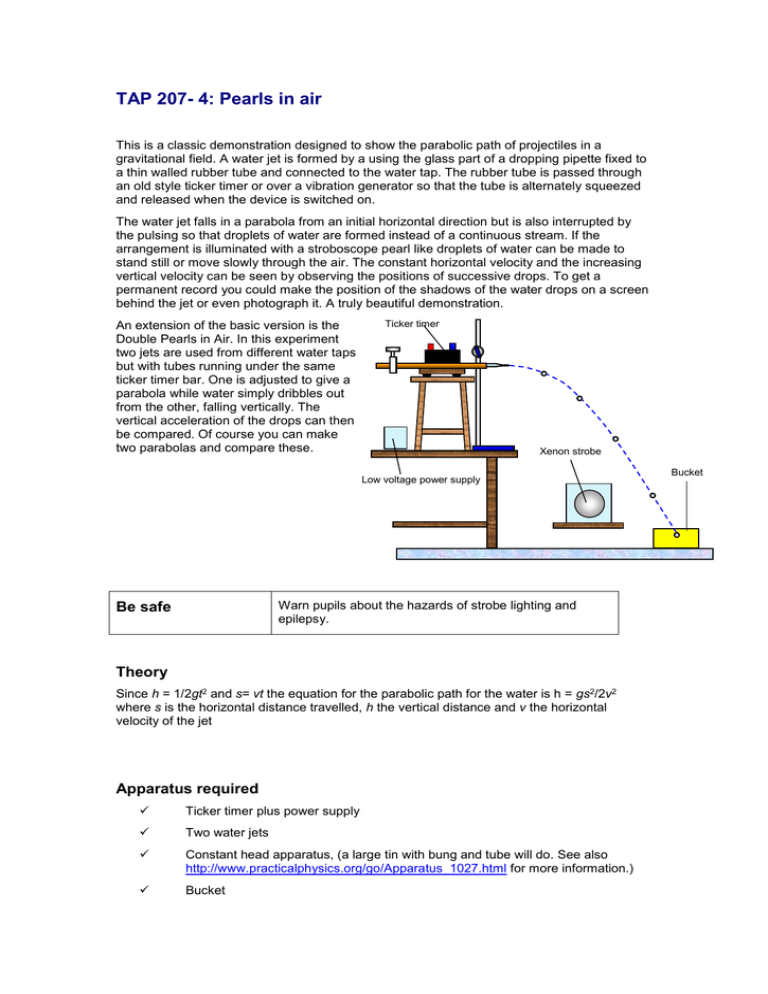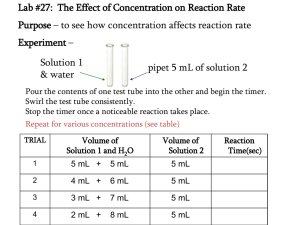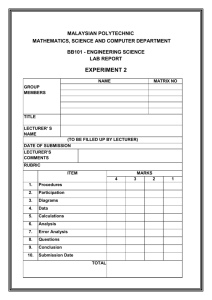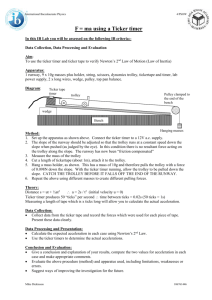Episode 207-4: Pearls in air (Word, 45 KB)
advertisement

TAP 207- 4: Pearls in air This is a classic demonstration designed to show the parabolic path of projectiles in a gravitational field. A water jet is formed by a using the glass part of a dropping pipette fixed to a thin walled rubber tube and connected to the water tap. The rubber tube is passed through an old style ticker timer or over a vibration generator so that the tube is alternately squeezed and released when the device is switched on. The water jet falls in a parabola from an initial horizontal direction but is also interrupted by the pulsing so that droplets of water are formed instead of a continuous stream. If the arrangement is illuminated with a stroboscope pearl like droplets of water can be made to stand still or move slowly through the air. The constant horizontal velocity and the increasing vertical velocity can be seen by observing the positions of successive drops. To get a permanent record you could make the position of the shadows of the water drops on a screen behind the jet or even photograph it. A truly beautiful demonstration. An extension of the basic version is the Double Pearls in Air. In this experiment two jets are used from different water taps but with tubes running under the same ticker timer bar. One is adjusted to give a parabola while water simply dribbles out from the other, falling vertically. The vertical acceleration of the drops can then be compared. Of course you can make two parabolas and compare these. Ticker timer Xenon strobe Low voltage power supply Warn pupils about the hazards of strobe lighting and epilepsy. Be safe Theory Since h = 1/2gt2 and s= vt the equation for the parabolic path for the water is h = gs2/2v2 where s is the horizontal distance travelled, h the vertical distance and v the horizontal velocity of the jet Apparatus required Ticker timer plus power supply Two water jets Constant head apparatus, (a large tin with bung and tube will do. See also http://www.practicalphysics.org/go/Apparatus_1027.html for more information.) Bucket Bucket Stroboscope External references This activity is taken from Resourceful Physics http://resourcefulphysics.org/



